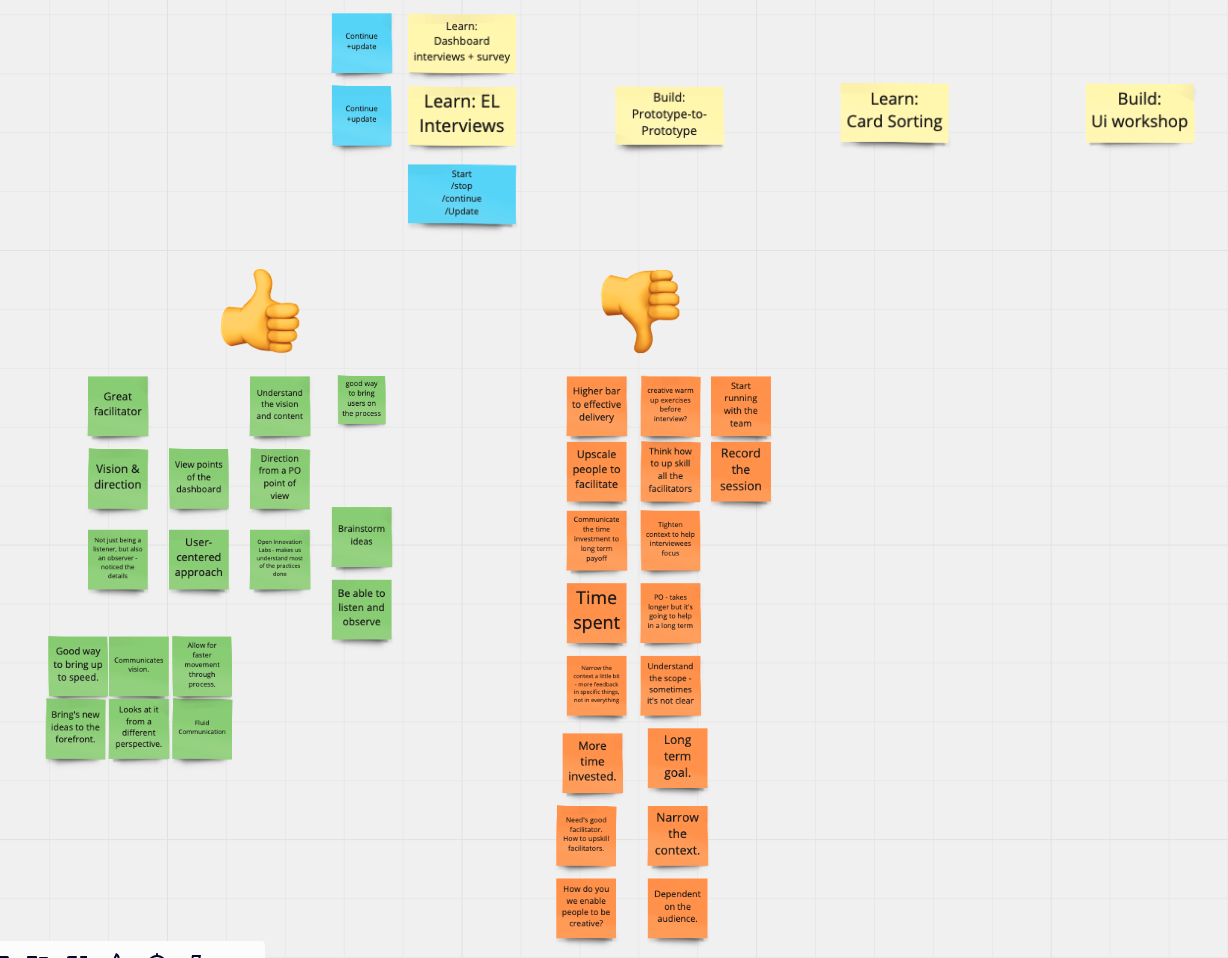Design Retro : Active
Improve the quality and usability of your product design
Philip Double
Riley Ikni
What Is Design Retro : Active?
This post-delivery practice is an opportunity to review the design journey of an engagement. It is an open forum critique involving the designer, a product owner (or engagement lead) and an audience of designers (a designer guild).
Why Do Design Retro : Active?
The goal of this practice is to map and analyze the process and practices utilized on an engagement in an attempt to collect honest feedback from owners and utilize that feedback to continuously improve our practices and deliveries in an effort to evaluate and maximize return on investment.
By performing this practice with the guild we are able to radiate the learnings immediately without a need for extra meetings or documentation. The guild also receives the feedback directly from the customer, minimizing the risk of introducing subjective or emotional biases.
Similar to a traditional retro - this is an opportunity to take a break, ideate and then take actions to improve or update the design journey - leveraging the collective wisdom of the guild to bear on the honing of the practices.
How to do Design Retro : Active?
BEFORE THE DESIGN RETRO : ACTIVE
- Maintain a diary of the process and practices utilized in the design journey of the engagement.
- Present any new practices utilized on the engagement to the guild during several lightening talks in order to reduce the time of the final Design Retro : Active.
- Brief the product owner on the practices to be covered in the Design Retro : Active.
- Product owner reflects upon the practices to be covered in the Design Retro : Active gathering quantitative and qualitative metrics and feedback on the efficacy and cost of each practice
PERFORMING THE DESIGN RETRO : ACTIVE
- Present and review, step by step the practices and the feedback with the PO... During this step of the practice any member of the guild can stop to ask questions to clarify or help to sharpen the diagnosis
- Iterate until all practices of the journey are covered - wash and repeat
- Ideate with the guild and the product owner on how the practices could have been improved and which could have been added to the Design Journey.
- Take Actions: Update the design journey with updated or new practices to continuously radiate and improve our design toolkit
Look at Design Retro : Active
Links we love
Check out these great links which can help you dive a little deeper into running the Design Retro : Active practice with your team, customers or stakeholders.

